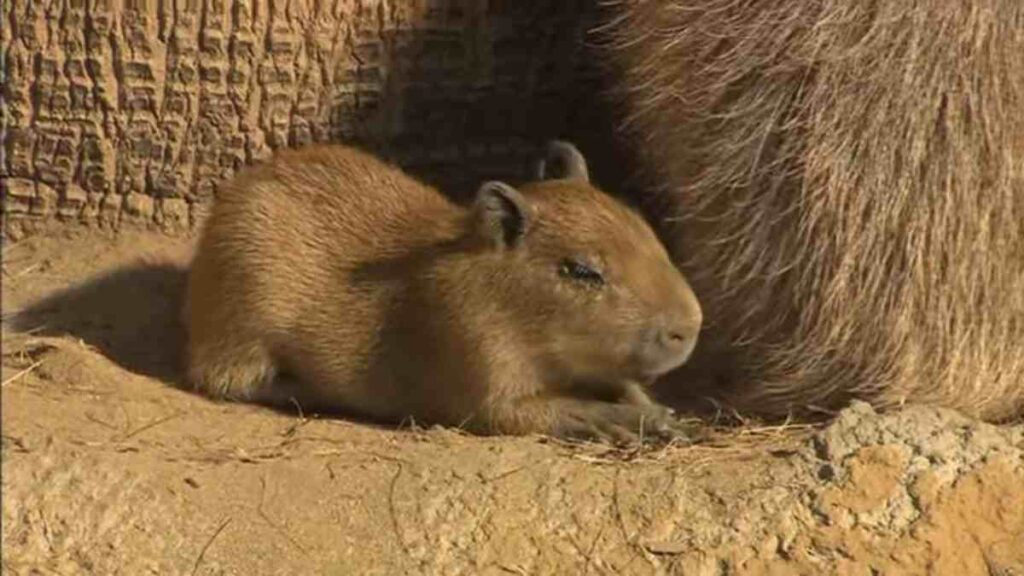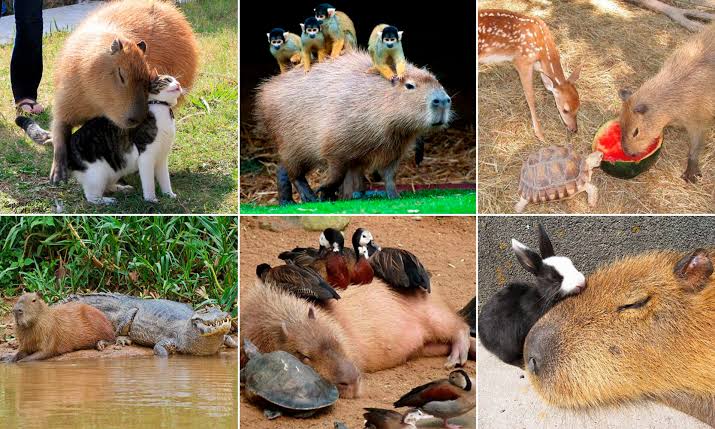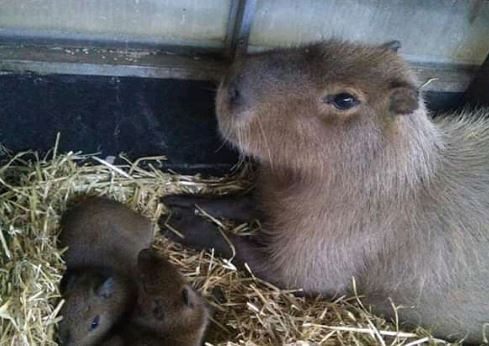Nestled within the lush habitats of South America, a fascinating creature resides, capturing the hearts and curiosity of animal enthusiasts worldwide. With their endearing appearances and laid-back demeanor, capybaras have become a beloved symbol of tranquility and harmony in the animal kingdom. But have you ever wondered if these charming creatures make any noise?
Yes, capybaras do make noise. They are known to produce a variety of vocalizations. Although they are generally quiet animals, capybaras use sounds to communicate with each other. Their most common noises are purrs, barks, whistles, and clicks. Purring is often associated with contentment and relaxation, while barks and whistles can indicate alarm or warning signals. Clicking sounds are typically used for communication between mothers and their young.
Capybaras also vocalize during social interactions and establish dominance within their groups. While they are not particularly loud animals, capybaras can produce distinct and audible sounds. These vocalizations play an important role in capybara communication and help them navigate the social dynamics within their groups.
Why Do Capybaras Vocalize?
Capybaras vocalize for various reasons, primarily to communicate with members of their group or to express their emotions. These vocalizations are crucial in their social interactions and in maintaining group cohesion. Here are some reasons why capybaras vocalize:
- Communication within the group: Capybaras use vocalizations to establish contact with other social group members. They emit soft whistles, chirps, or purrs to communicate their presence, coordinate movements, or maintain group cohesion during activities like foraging or resting.
- Warning or alarm calls: Capybaras produce louder and more intense vocalizations when they sense danger or perceive a threat. These alarm calls warn their group members about potential predators or other hazards in the vicinity.
- Social bonding and recognition: Vocalizations also influence social bonding among capybaras. They use different sounds to establish familiarity and recognition and reinforce social relationships within their group.
- Expression of emotions: Capybaras vocalize to express their emotions, such as contentment, frustration, or distress. They may emit high-pitched whines when agitated or distressed and lower-pitched vocalizations when content or relaxed.
How Do Capybaras Maintain Homeostasis? [Answered]
Are Capybara Vocalizations Different In Different Situations?
Capybara vocalizations can vary in different situations, although they primarily serve as a means of communication within their social groups. Capybaras are highly social animals that live in large family groups, and vocalizations play a crucial role in their interactions.
One of the most common vocalizations made by capybaras is a purr-like sound, often referred to as a “capybara purr.” This gentle, rhythmic noise is typically heard when capybaras are relaxed and content, such as during social grooming or while resting. The purring sound is believed to reinforce social bonds within the group and create a sense of unity and harmony.
In addition to purring, capybaras can produce a variety of other vocalizations. When they are startled or feel threatened, capybaras emit alarm calls or barks, which are sharp, short, and high-pitched sounds. These alarm calls serve as warning signals to alert other group members about potential dangers. Capybaras can also produce a range of squeals, whistles, and grunts, which may have different meanings depending on the context.
Capybaras may engage in aggressive vocalizations during conflict or competition, such as growls or barks. These vocalizations are often accompanied by physical displays, such as teeth chattering or displaying dominant postures.
Capybaras use vocalizations to communicate with their young. They produce distinct calls to gather their offspring or to signal them to stay close when they perceive threats. These calls are usually soft and gentle, aimed at maintaining contact and ensuring the safety of the young capybara.
5 Key Signs A Capybara Is In Grieve [Recommended]
Can Capybaras Communicate Through Sounds?
Yes, capybaras can communicate through sounds. While they are generally quiet animals, capybaras produce various vocalizations to convey various messages and establish communication within their social groups. Their vocal repertoire includes a combination of grunts, barks, whistles, clicks, purrs, and even a high-pitched alarm call.
Capybaras primarily use vocalizations to communicate with their offspring, mates, or other group members. They may emit soft purring or chirping sounds to express contentment or to maintain social bonds. When capybaras feel threatened or sense danger, they can produce louder and more alarming vocalizations, such as barks or alarm calls, to alert their group members and coordinate a response.
In addition to sounds, capybaras also communicate through body language, scent marking, and tactile interactions. Their vocalizations are important to their overall communication system, allowing them to convey emotions, express needs, establish territory boundaries, and coordinate group activities.
Do Capybaras Eat Water Lilies?
Do Capybaras Make Noise When They Are in Danger or Threatened?
Capybaras do make noise when they are in danger or feel threatened. When faced with potential danger, capybaras can emit vocalizations to communicate distress or warn others in their group. These sounds can include barks, whistles, clicks, and purrs. The vocalizations may vary depending on the situation and the individual capybara’s response.
These vocalizations aim to alert other capybaras near potential danger, allowing them to take evasive action or be on high alert. Capybaras can communicate their fear or distress to their group members by emitting vocal signals, enhancing their safety.
Capybaras are social animals that live in groups and rely on their members for protection. When a capybara feels threatened, it can produce loud, alarming vocalizations that can alert the entire group, ensuring a coordinated response to the potential danger.
Conclusion
When expressing danger or feeling threatened, capybaras make noise to communicate their distress to others in their group. Through barks, whistles, clicks, and purrs, capybaras alert their fellow capybaras of potential dangers, allowing for a coordinated response and enhanced safety.
These vocalizations serve as an essential means of communication within Capybara communities. By emitting these alarm calls, capybaras effectively convey their fear or distress, ensuring the entire group remains vigilant and ready to react if needed.
It’s truly remarkable how capybaras utilize vocalizations as a form of social communication, further emphasizing their highly social and cooperative nature. So, the next time you encounter a capybara and wonder if it makes any noise, remember that these charming creatures have a voice of their own, particularly when safeguarding themselves and their companions from potential threats.


![How Long Do Capybaras Live? - [Answered] How Long Do Capybaras Live](https://capybaratips.com/wp-content/uploads/2023/03/Capybara-Pix-250x200.webp)
![Why Do Capybaras Not Have Tails? - [Answered] Why Do Capybaras Not Have Tails](https://capybaratips.com/wp-content/uploads/2023/03/Capy-Tail-250x200.webp)
![Capybara Meat And Its Culinary Uses - [Every You Should Know] Capybara Meat & Culinary Uses](https://capybaratips.com/wp-content/uploads/2023/03/Capybara-meat-250x200.webp)




